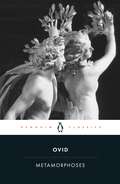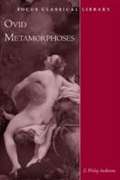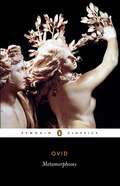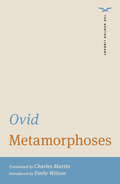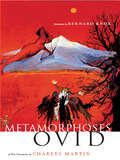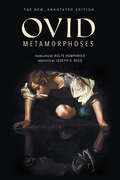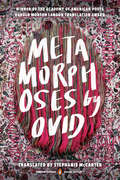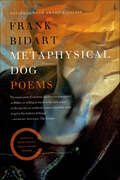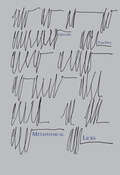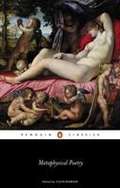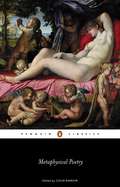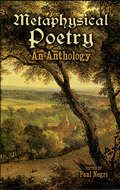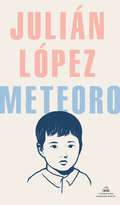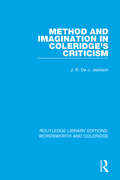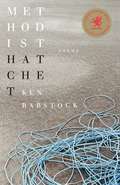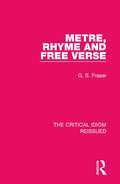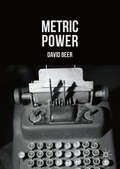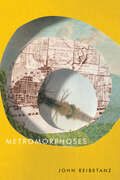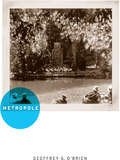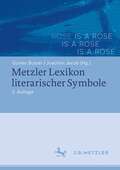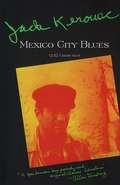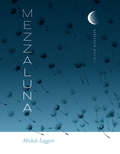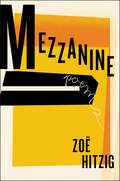- Table View
- List View
Metamorphoses
by Ovid'Still remarkably vivid. It is easier to read this for pure pleasure than just about any other ancient text' Nicholas Lezard, GuardianOvid's sensuous and witty poem begins with the creation of the world and brings together a dazzling array of mythological tales, ingeniously linked by the idea of transformation - often as a result of love or lust - where men and women find themselves magically changed into extraordinary new beings. Including the well-known stories of Daedalus and Icarus, Pyramus and Thisbe, Pygmalion, Perseus and Andromeda, and the fall of Troy, the Metamorphoses has influenced writers and artists from Shakespeare and Chaucer to Picasso and Ted Hughes. This translation by David Raeburn is in hexameter verse, which brilliantly captures the energy and spontaneity of the original.Translated by DAVID RAEBURN with an Introduction by DENIS FEENEY
Metamorphoses
by Publius Ovidius NasoTo help the reader contend with Ovid's frequent leaps both ahead and back in time, the principle episodes are listed at the beginning of each book and the subsections and digressions marked with indentations.
Metamorphoses (Penguin Classics)
by Denis Feeney David Raeburn<P>Ovid’s sensuous and witty poem brings together a dazzling array of mythological tales, ingeniously linked by the idea of transformation—often as a result of love or lust—where men and women find themselves magically changed into new and sometimes extraordinary beings.<P> Beginning with the creation of the world and ending with the deification of Augustus, Ovid interweaves many of the best-known myths and legends of ancient Greece and Rome, including Daedalus and Icarus, Pyramus and Thisbe, Pygmalion, Perseus and Andromeda, and the fall of Troy.
Metamorphoses (The Norton Library #0)
by OvidAbout Charles Martin’s translation Winner of the 2004 Harold Morton Landon Translation Award from the Academy of American Poets, Charles Martin’s blank-verse translation of the Metamorphoses is a “smoothly readable, accurate, charming, subtle yet clear” (Richard Wilbur) version that “highlights [the poem’s] lightness and pervasive sense of universal mutability” (Michael Dirda).
Metamorphoses: A New Translation
by Charles Martin Ovid Bernard M. Knox"A version that has been long awaited, and likely to become the new standard."--Michael Dirda, Washington Post Ovid's epic poem--whose theme of change has resonated throughout the ages--is one of the most important texts of Western imagination, an inspiration from Dante's times to the present day, when writers such as Salman Rushdie and Italo Calvino have found a living source in Ovid's work. Charles Martin combines a close fidelity to Ovid's text with verse that catches the speed and liveliness of the original. Martin's Metamorphoses will be the translation of choice for contemporary readers in English. This volume also includes endnotes and a glossary of people, places, and personifications.
Metamorphoses: The New, Annotated Edition
by Rolfe Humphries Ovid Joseph D. Reed"So easy to read that one may have to think twice to realize these tales are nearly 2,000 years old." –Washington Post "One of the most captivating books ever written" —The New York Times Ovid’s Metamorphoses is one of the most influential works of Western literature, inspiring artists and writers from Titian to Shakespeare to Salman Rushdie. These are some of the most famous Roman myths as you’ve never read them before—sensuous, dangerously witty, audacious—from the fall of Troy to birth of the minotaur, and many others that only appear in the Metamorphoses. Connected together by the immutable laws of change and metamorphosis, the myths tell the story of the world from its creation up to the transformation of Julius Caesar from man into god. In the ten-beat, unrhymed lines of this now-legendary and widely praised translation, Rolfe Humphries captures the spirit of Ovid’s swift and conversational language, bringing the wit and sophistication of the Roman poet to modern readers. This special annotated edition includes new, comprehensive commentary and notes by Joseph D. Reed, Professor of Classics and Comparative Literature at Brown University.
Metamorphoses: Translated By Various Authors (classic Reprint) (A Penguin Classics Hardcover)
by OvidThe first female translator of the epic into English in over sixty years, Stephanie McCarter addresses accuracy in translation and its representation of women, gendered dynamics of power, and sexual violence in Ovid&’s classic. A Penguin Classic Hardcover Ovid&’s Metamorphoses is an epic poem, but one that upturns almost every convention. There is no main hero, no central conflict, and no sustained objective. What it is about (power, defiance, art, love, abuse, grief, rape, war, beauty, and so on) is as changeable as the beings that inhabit its pages. The sustained thread is power and how it transforms us, both those of us who have it and those of us who do not. For those who are brutalized and traumatized, transformation is often the outward manifestation of their trauma. A beautiful virgin is caught in the gaze of someone more powerful who rapes or tries to rape them, and they ultimately are turned into a tree or a lake or a stone or a bird. The victim&’s objectification is clear: They are first a visual object, then a sexual object, and finally simply an object. Around 50 of the epic&’s tales involve rape or attempted rape of women. Past translations have obscured or mitigated Ovid&’s language so that rape appears to be consensual sex. Through her translation, McCarter considers the responsibility of handling sexual and social dynamics. Then why continue to read Ovid? McCarter proposes Ovid should be read because he gives us stories through which we can better explore ourselves and our world, and he illuminates problems that humans have been grappling with for millennia. Careful translation of rape and the body allows readers to see Ovid&’s nuances clearly and to better appreciate how ideas about sexuality, beauty, and gender are constructed over time. This is especially important since so many of our own ideas about these phenomena are themselves undergoing rapid metamorphosis, and Ovid can help us see and understand this progression. The Metamorphoses holds up a kaleidoscopic lens to the modern world, one that offers us the opportunity to reflect on contemporary discussions about gender, sexuality, race, violence, art, and identity.
Metaphysical Dog: Poems
by Frank BidartNational Book Critics Circle Award WinnerA National Book Award FinalistMetaphysical Dog offers a vital, searching collection from one of finest American poets at work todayIn "Those Nights," Frank Bidart writes: "We who could get / somewhere through / words through / sex could not." Words and sex, art and flesh: In Metaphysical Dog, Bidart explores their nexus. The result stands among this deeply adventurous poet's most powerful and achieved work, an emotionally naked, fearlessly candid journey through many of the central axes, the central conflicts, of his life, and ours.Near the end of the book, Bidart writes: In adolescence, you thought your work ancient work: to decipher at last human beings' relation to God. Decipher love. To make what was once whole whole again: or to see why it never should have been thought whole.This "ancient work" reflects what the poet sees as fundamental in human feeling, what psychologists and mystics have called the "hunger for the Absolute"—a hunger as fundamental as any physical hunger. This hunger must confront the elusiveness of the Absolute, our self-deluding, failed glimpses of it. The third section of the book is titled "History is a series of failed revelations."The result is one of the most fascinating and ambitious books of poetry in many years.One of Publishers Weekly's Best Poetry BooksA New York Times Notable BookAn NPR Best Book of the Year
Metaphysical Licks
by Gregoire Pam DickMetaphysical Licks, a hybrid prose-poem/novella riffing on the lives and works of Austrian poet Georg Trakl and his sister, Grete, is the restless new work by writer and translator Gregoire Pam Dick [a.k.a. Mina Pam Dick, Jake Pam Dick et al., author of Delinquent (Futurepoem, 2009)]. With a mix of high and low, tragic and comic, abstract and concrete, artifice and confession, Dick's playful writing takes risks. It transposes Georg's Grete (musician, fellow addict and suicide) to current-day Greta, gives her Wittgenstein and Kafka as other brothers, and betroths her (unhappily) to Nietzsche. Crossing New York City with Vienna and Berlin, it composes dissonance from urban moments, narrative fragments, and philosophical remarks. The inventive, androgynous, sexually loose (and intermittently incestuous) persona of Greta expresses itself through the surreal and haunted imagery of Trakl's poems. Readers will be drawn to Dick's combination of girl/punk/genderqueer rebelliousness and intensely questioning thought, in a text where creativity alone offers escape and exultation, and subjectivity keeps changing its sounds.
Metaphysical Poetry
by Christopher Ricks Colin BurrowA key anthology for students of English literature, Metaphysical Poetry is a collection whose unique philosophical insights are some of the crowning achievements of Renaissance verse, edited with an introduction and notes by Colin Burrow in Penguin Classics. Spanning the Elizabethan age to the Restoration and beyond, Metaphysical poetry sought to describe a time of startling progress, scientific discovery, unrivalled exploration and deep religious uncertainty. This compelling collection of the best and most enjoyable poems from the era includes tightly argued lyrics, erotic and libertine considerations of love, divine poems and elegies of lament by such great figures as John Donne, George Herbert, Andrew Marvell and John Milton, alongside pieces from many other less well known but equally fascinating poets of the age, such as Anne Bradstreet, Katherine Philips and Thomas Traherne. Widely varied in theme, all are characterized by their use of startling metaphors, imagery and language to express the uncertainty of an age, and a profound desire for originality that was to prove deeply influential on later poets and in particular poets of the Modernist movement such as T. S. Eliot. In his introduction, Colin Burrow explores the nature of Metaphysical poetry, its development across the seventeenth century and its influence on later poets and includes A Very Short History of Metaphysical Poetry from Donne to Rochester. This edition also includes detailed notes, a chronology and further reading. Colin Burrow is Reader in Renaissance and Comparative Literature at Gonville and Caius College, Cambridge. He has edited Shakespeare's Sonnets for OUP and The Complete Works of Ben Jonson, and is working on the Elizabethan volume of the Oxford English Literary History. If you enjoyed Metaphysical Poetry, you might like John Donne's Selected Poems, also available in Penguin Classics.
Metaphysical Poetry
by Colin BurrowA key anthology for students of English literature, Metaphysical Poetry is a collection whose unique philosophical insights are some of the crowning achievements of Renaissance verse, edited with an introduction and notes by Colin Burrow in Penguin Classics.Spanning the Elizabethan age to the Restoration and beyond, Metaphysical poetry sought to describe a time of startling progress, scientific discovery, unrivalled exploration and deep religious uncertainty. This compelling collection of the best and most enjoyable poems from the era includes tightly argued lyrics, erotic and libertine considerations of love, divine poems and elegies of lament by such great figures as John Donne, George Herbert, Andrew Marvell and John Milton, alongside pieces from many other less well known but equally fascinating poets of the age, such as Anne Bradstreet, Katherine Philips and Thomas Traherne. Widely varied in theme, all are characterized by their use of startling metaphors, imagery and language to express the uncertainty of an age, and a profound desire for originality that was to prove deeply influential on later poets and in particular poets of the Modernist movement such as T. S. Eliot.In his introduction, Colin Burrow explores the nature of Metaphysical poetry, its development across the seventeenth century and its influence on later poets and includes A Very Short History of Metaphysical Poetry from Donne to Rochester. This edition also includes detailed notes, a chronology and further reading.Colin Burrow is Reader in Renaissance and Comparative Literature at Gonville and Caius College, Cambridge. He has edited Shakespeare's Sonnets for OUP and The Complete Works of Ben Jonson, and is working on the Elizabethan volume of the Oxford English Literary History.If you enjoyed Metaphysical Poetry, you might like John Donne's Selected Poems, also available in Penguin Classics.
Metaphysical Poetry: An Anthology
by Paul NegriDramatic and conversational in rhythm and tone and rich in striking, unusual imagery, metaphysical poetry is represented in this anthology by such masterpieces as "Death, Be Not Proud," by John Donne; Andrew Marvell's "To His Coy Mistress," as well as works by George Herbert, Henry Vaughan, Richard Crashaw, Francis Quarles, Thomas Traherne, and others. Includes 2 selections from the Common Core State Standards Initiative: "Song" and "A Valediction Forbidding Mourning."
Meteoro
by Julián LópezUna lectura lírica, contemporánea y tierna sobre del amor, la infancia, el ser hijo y encontrarle un sentido a la vida en una época de desaliento y soledad. «Julián López es un autor exquisito.»Gabriela Cabezón Cámara Poemas urbanos, melancólicos, amorosos. En ellos transcurren los días del ser hijo y se despliegan los aprendizajes trascendentes de la infancia, intuyéndolos en el susurro sensual entre el padre y la madre o arrancándolos de sus discusiones. Siguiendo los pasos de quien sale a trabajar, de quien cocina y lava y tiende la ropa al sol. Siguiendo los pasos de quien se apura a sacarla antes de que caigan las gotas de una tormenta intempestiva. Pero también, en estos poemas, juegan tiernas las horas con la persona amada, cuando la ciudad se entrega a la armonía natural de las plantas o se irrita con la disonancia del tránsito. Entonces, el estado de ánimo transforma la mirada sobre los objetos de la casa y del cielo que la abarca. Meteoro, como cada libro de Julián López, es una máquina expresiva, una aventura lírica que se abraza a la realidad como si se arrojara sobre una bomba. Para que le estalle en el pecho. La crítica ha dicho... «Una morosidad de detalles propia de la letanía pero también del poeta.»María Moreno «Julián López es un gran arquitecto de la literatura argentina.»Flavia Pittella «Con preciosismo en el manejo del lenguaje, Julián López propone al lector una experiencia inmersiva en la memoria sensible; un viaje que es al mismo tiempo vibrante, melancólico y sexual.»Verónica Abdala «Una masa, una masa poética y narrativa.»Silvina Giaganti
Method and Imagination in Coleridge's Criticism (RLE: Wordsworth and Coleridge #6)
by J.R. de J. JacksonFirst published in 1969, this book places Coleridge’s literary criticism against the background of his philosophical thinking, examining his theories about criticism and the nature of poetry. Particular attention is paid to the structure of Biographia Literaria, Coleridge’s distinction between Imagination and Fancy, his definitions of the poetic characters of Shakespeare and Wordsworth, his analysis of the mental state of audiences in theatres, and his interpretations of Paradise Lost, Hamlet and Aeschylus’ Prometheus. The emphasis throughout is on how Coleridge thought rather than what he thought and the process rather than the conclusions of his criticism.
Methodist Hatchet
by Ken BabstockShortlisted for the Griffin Poetry Prize and the Trillium Book Award Marooned in the shiftless, unnamed space between a map of the world and a world of false maps, the poems in Methodist Hatchet cling to what’s necessary from each, while attempting to sing their own bewilderment. Carolinian forest echoes back as construction cranes in an urban skyline. Second Life returns as wildlife, as childhood. Even the poem itself -- the idea of a poem -- as a unit of understanding is shadowed by a great unknowing. Fearless in its language, its trajectories and frames of reference, Methodist Hatchet gazes upon the objects of its attention until they rattle and exude their auras of strangeness. It is this strangeness, this mysterious stillness, that is the big heart of Ken Babstock’s playful, fierce, intelligent book.
Metre, Rhyme and Free Verse (The Critical Idiom Reissued #7)
by G. S. FraserFirst published in 1970, this work outlines the principles of English prosody in a way that will enable the reader to recognise and scan any piece of English verse. It illustrates the close relationship between English speech patterns and verse patterns, and the primary importance of the phenomenon of stress. It also discusses the suitability of various kinds of metrical pattern for various kinds of poetic effect. This book will be of interest to those studying poetry and English literature.
Metric Power
by David BeerThis book examines the powerful and intensifying role that metrics play in ordering and shaping our everyday lives. Focusing upon the interconnections between measurement, circulation and possibility, the author explores the interwoven relations between power and metrics. He draws upon a wide-range of interdisciplinary resources to place these metrics within their broader historical, political and social contexts. More specifically, he illuminates the various ways that metrics implicate our lives - from our work, to our consumption and our leisure, through to our bodily routines and the financial and organisational structures that surround us. Unravelling the power dynamics that underpin and reside within the so-called big data revolution, he develops the central concept of Metric Power along with a set of conceptual resources for thinking critically about the powerful role played by metrics in the social world today.
Metromorphoses (Hugh MacLennan Poetry Series)
by John ReibetanzWhen he first hiked the Don Valley trails / all he heard was river as he strode / beside its glitter of smashing glassGrounded in the local and immediate – from Toronto’s rivers and ravines to its highways and skyscrapers – Metromorphoses explores some of the radical changes that have taken place in the city during the course of its history.The collection’s poems focus, in roughly chronological order, on the city’s inhabitants and the changing relationships between people and place, from the original Indigenous presence, through the immigrants of the nineteenth century and the Depression and war survivors of the twentieth century, to the twenty-first century’s setbacks and affirmations. We encounter characters such as Symphony Pete, who whistled classical music while hiking Don Valley trails, Henry “Box” Brown, who escaped from southern slavery in a packing crate, or the exhausted anonymous newsboy a photographer caught fast asleep next to his stack of newspapers on a flight of stone steps. We zoom in like time-lapse photography on the changes that a single site has experienced, from wood-frame cottages to foundry to synagogue to furniture store to parking lot to the new provincial courthouse.These poems bring the reader closer to the impulses that drove the art of the Mississaugas, the escape from slavery or famine of new settlers, or the social awareness of a Dr Charles Hastings or a Raymond Moriyama. Far from Eliot’s “unreal city,” Metromorphoses takes us into the heart of the real Toronto, alive and ever-changing.
Metropole
by Geoffrey G. O'BrienGeoffrey G. O'Brien's third collection opens with a set of lyric experiments whose music and mutable syntax explore the social relations concealed in material things. O'Brien's poems measure the "vague cadence" of daily life, testing both the value and limits of art in a time of vanishing publics and permanent war. The long title poem, written in a strict iambic prose, charts the disappearance of the poetic into the prosaic, of meter into the mundane, while reactivating the very possibilities it mourns: O'Brien's prosody invests the prose of things with the intensities of verse. In the charged space of this hybrid form, objects become subjects and sense pivots mid-sentence into song: "The sun revolves around the earth revolves around the sun."
Metzler Lexikon literarischer Symbole
by Joachim Jacob Günter Butzer500 Artikel von „Abend“ bis „Zypresse“: Dieses Lexikon versammelt die wichtigsten Symbole der abendländischen Literatur und zeichnet ihre Geschichte an exemplarischen Belegstellen nach. Zahlen, Farben, Pflanzen, Tiere, Orte, Räume, Dinge, Tages- und Jahreszeiten u.v.m. werden jeweils in ihren zentralen Bedeutungen von der griechisch-römischen und biblischen bis in die gegenwärtige Literatur beschrieben.Die dritte Auflage hat neben 30 neuen Artikeln ein ausführliches Bedeutungsregister, das ermöglicht, von Bedeutungen ausgehend die für diese verwendeten Symbole zu ermitteln.
Meva ra Roonkh (Hypocrites)
by Anna Ram SudamaA ruthless expose of the rich, corrupt politicians, their duplicity and double talk as well as the villagers' exploitation, their superstition, ignorance, destitution and hunger.
Mexican Ballads, Chicano Poems: History and Influence in Mexican-American Social Poetry
by José E. LimónMexican Ballads, Chicano Poems combines literary theory with the personal engagement of a prominent Chicano scholar. Recalling his experiences as a student in Texas, José Limón examines the politically motivated Chicano poetry of the 60s and 70s. He bases his analyses on Harold Bloom's theories of literary influence but takes Bloom into the socio-political realm. Limón shows how Chicano poetry is nourished by the oral tradition of the Mexican corrido, or master ballad, which was a vital part of artistic and political life along the Mexican-U.S. border from 1890 to 1930. Limón's use of Bloom, as well as of Marxist critics Raymond Williams and Fredric Jameson, brings Chicano literature into the arena of contemporary literary theory. By focusing on an important but little-studied poetic tradition, his book challenges our ideas of the American canon and extends the reach of Hispanists and folklorists as well.
Mexico City Blues
by Jack Kerouac"Mexico City Blues" is Kerouac's only collection of poetry. He roams across continents and cultures in a search for meaning and expression.
Mezzaluna: Selected Poems (Wesleyan Poetry Series)
by Michele LeggottMezzaluna gathers work from Michele Leggott's nine books of poetry. As reviewer David Eggleton writes: "Leggott shows us that the ordinary is full of marvels which... stitched, flow together into sequences and episodes that in turn form an ongoing serial, or bricolage: a single poem, then, rejecting exactness, literalism, naturalism in favor of resonance, currents, patterns of ebb and flow." In complex lyrics, sampling thought and song, voice and vision, Leggott creates lush textured soundscapes. Her poetry covers a wide range of topics rich in details of her New Zealand life, full of history and family, lights and mirrors, the real and the surreal. She focuses on appearance and disappearance as modes of memory, familial until we lose sight of that horizon line and must settle instead for a series of intersecting arcs. Leggott writes with tenderness and courage about the paradoxes of losing her sight and remaking the world in words.on white you fallinto lineher voice fillsthe groundpotato cuts the sundries paints the deck printsshapes shadows of oranges green 'cyan and magenta' sail your picnicsea into the eye land crimson lemons hand methe moonrisen rode rose ridewhite out to see
Mezzanine: Poems
by Zoe HitzigIn her striking collection of poems, Zoë Hitzig investigates how we seek certitude, power, and domination over the natural world and one another. Hitzig brings a scientific rigor to her searing lyricism, as well as a raucous energy and willingness to allow her work to dwell in states of uncertainty and precariousness. The result is an original voice that is incisive and unsparing, but also passionate and tender. Her poems probe the authority of language and logic, questioning the sovereignty of the technological, economic, legal, and political systems that mediate our lives. Urgent in its creation of a new way of looking at our social and natural worlds, Mezzanine is an insightful and visceral debut collection from a poet whose work is poised to leave a lasting mark.
